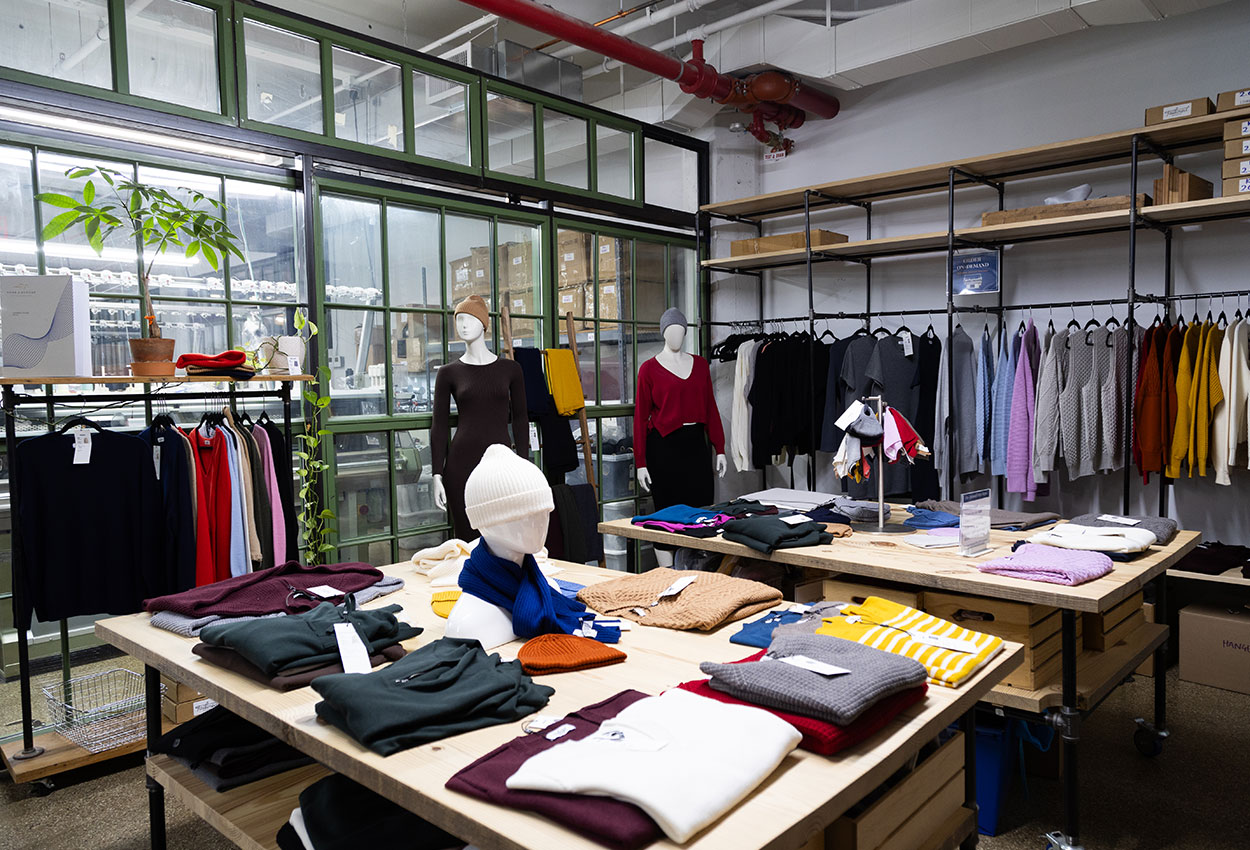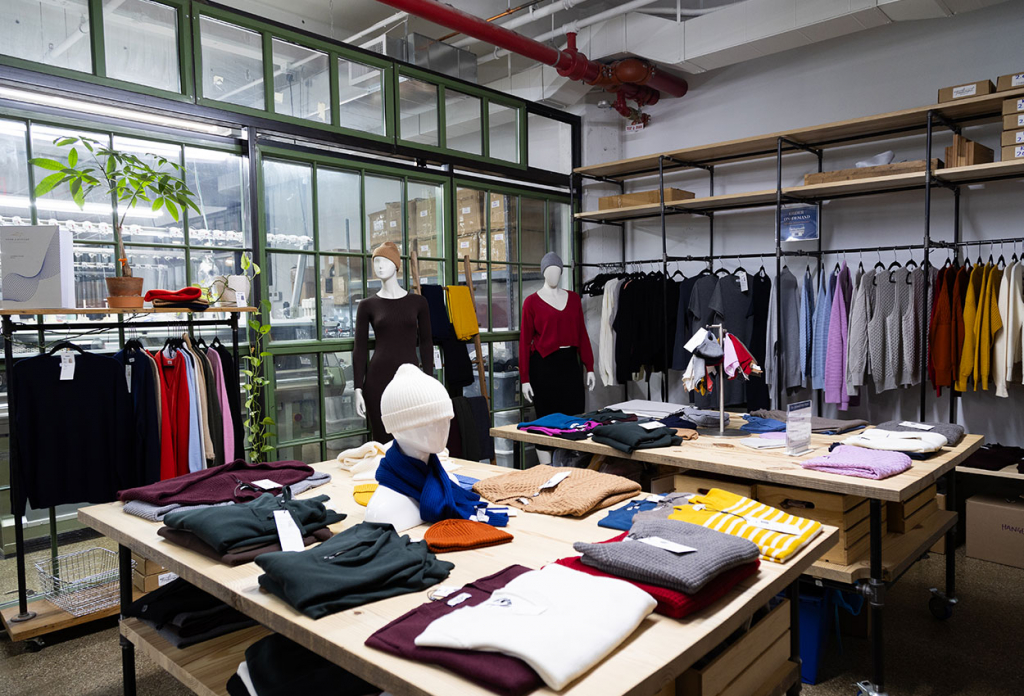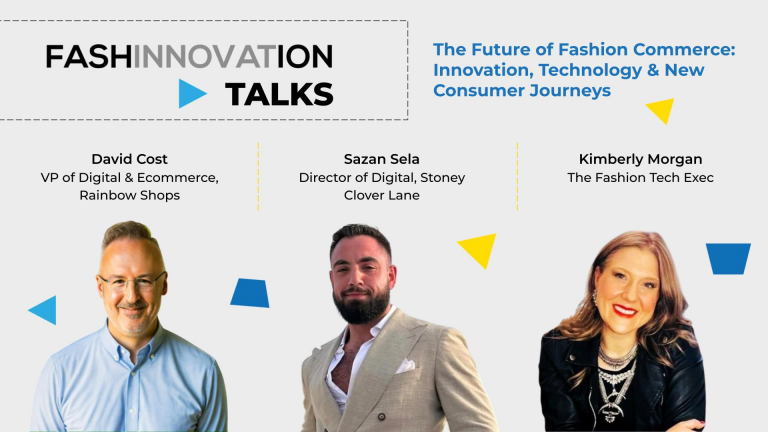Rethinking Traditional Fashion Supply Chains
The fashion industry is undergoing a fundamental transformation. For decades, brands have relied on a production model that requires large upfront investments, long lead times, and significant inventory risks. The result? Overproduction, excess waste, and financial strain on both emerging designers and established brands.
In response to these challenges, on-demand manufacturing has emerged as a solution that offers greater efficiency, sustainability, and flexibility. Unlike traditional bulk production, on-demand manufacturing allows brands to create products only when they’re needed—minimizing waste, reducing storage costs, and improving cash flow.
One company leading the charge in this space is Tailored Industry. The company has built a new model of apparel production with a world-class 3D knitting factory in Brooklyn, NY and a proprietary on-demand software platform.
The Rise of On-Demand Production in Fashion
The shift toward on-demand production is not just a trend—it’s a response to some of the biggest inefficiencies in fashion manufacturing.
Brands have long struggled with issues such as:
- Overproduction & Waste: Studies estimate that the fashion industry produces over 92 million tons of textile waste each year. Bulk manufacturing often results in unsold inventory that ends up in landfills or discount bins.
- High Minimum Order Quantities (MOQs): Many manufacturers require brands to place large orders to justify production costs, making it difficult for smaller brands to enter the market.
- Long Lead Times: Traditional production cycles can take months, delaying product launches and limiting a brand’s ability to react to trends.
- Supply Chain Disruptions: Global supply chains, particularly in the wake of the pandemic, have become increasingly unreliable, causing delays and financial instability for brands dependent on overseas manufacturing.
On-demand manufacturing directly addresses these challenges by producing garments only after a sale is made, allowing brands to operate with greater agility and sustainability.

The Technology Powering On-Demand Manufacturing
Two of the key innovations driving on-demand production are Tailored Industry’s on-demand software platform and 3D knitting factory.
The software platform powers on-demand fulfillment for brands and optimizes the production flow in the factory.
The 3D knitting machines create garments in a single piece, reducing fabric waste and eliminating the need for extensive assembly.
Tailored Industry, for example, uses Shima Seiki knitting machines, which allow for seamless garment production with zero excess fabric waste. This approach not only reduces environmental impact but also enhances garment durability and comfort.
The Benefits of On-Demand Production
1. Sustainability & Waste Reduction
Traditional fashion production contributes significantly to global pollution. On-demand manufacturing eliminates the problem of overproduction, ensuring that every piece produced has a buyer.
2. Financial Efficiency
Producing only what is needed means brands don’t have to tie up capital in excess inventory. This allows emerging brands to scale more sustainably, without the financial burden of unsold products.
3. Faster Market Response
With traditional supply chains, a new design can take six months or more to reach customers. On-demand models significantly shorten this timeline. Some manufacturers, like Tailored Industry, offer 4 to 6-week development cycles, enabling brands to bring new designs to market in record time.
4. Customization & Personalization
One of the most exciting aspects of on-demand manufacturing is the potential for mass customization. Since products are made per order, brands can offer consumers custom fits, colors, and design modifications—a level of personalization that was once cost-prohibitive in traditional production.
5. Localized & Ethical Manufacturing
Offshoring has long been a cost-saving strategy for brands, but it often comes at the expense of labor rights,environmental responsibility and reduced profitability. Localized production hubs, such as Tailored Industry’s facility in Brooklyn, allow brands to manufacture ethically, reduce carbon emissions from shipping, support local economies, and increase profitability.

How Brands Are Adopting On-Demand Models
From emerging designers to established retailers, brands are increasingly integrating on-demand production into their business models. Some are using it to test new designs with limited risk, while others are transitioning entirely to pre-order and made-to-order models.
Companies that have embraced this approach benefit from:
- Higher sell-through rates (since there’s no excess inventory)
- Lower return rates (since products are often customized)
- More sustainable business practices, which appeal to today’s eco-conscious consumers
- Increased profitability (Oliver Charles, one of Tailored’s Brand Partners scaled to $2M+ in annual revenue in just 3 years producing exclusively on-demand)
How Tailored Industry is innovating in the on-demand production promise
Rapid development timelines. Tailored Industry can take the design inspiration and have a fully developed product in 4 to 6 weeks.
In-house Design Team. Tailored Industry boast the largest wholegarment design team in North America. Time and experience with Shima Seiki machines is crucial to efficiency and execution when producing new styles. Adding their design team to an arsenal is like adding 4 designers for a fraction of the cost.
Stocked Yarn, Year-Round. Most factories require their clients to order their own yarn. Tailored Industry keeps5 premium yarns on the shelves for all of their Brand Partners to use.
Evergreen Private Label Catalog. Tailored Industry has a robust 300+ style catalog of proven styles ready-to-launch.
Custom KnitPLM System. Designers that work with Tailored Industry like how easy it is to communicate technical edits and other information using Tailored Industry’s on-platform KnitPLM system.
On Demand Supply ERP: With Tailored Industry, pick and pack is included. Tailored Industry ship everything for as a part of their membership. They are more affordable than industry standard 3PLs.

The Future of Fashion Manufacturing
On-demand manufacturing is poised to become the new industry standard, replacing the outdated bulk production model that has dominated fashion for decades. Tailored Industry is taking the lead. As technology continues to evolve and consumers demand transparency, customization, and sustainability, brands that adopt on-demand models will be better positioned to thrive.
This shift represents more than just a logistical change—it’s a necessary evolution toward a smarter, leaner, and more responsible fashion industry.
Want to Learn More?
For brands exploring on-demand production and sustainable manufacturing, companies like Tailored Industry offer insights, expertise, and technology-driven solutions that are shaping the future of fashion.
Explore more about on-demand production at Tailored Industry.






